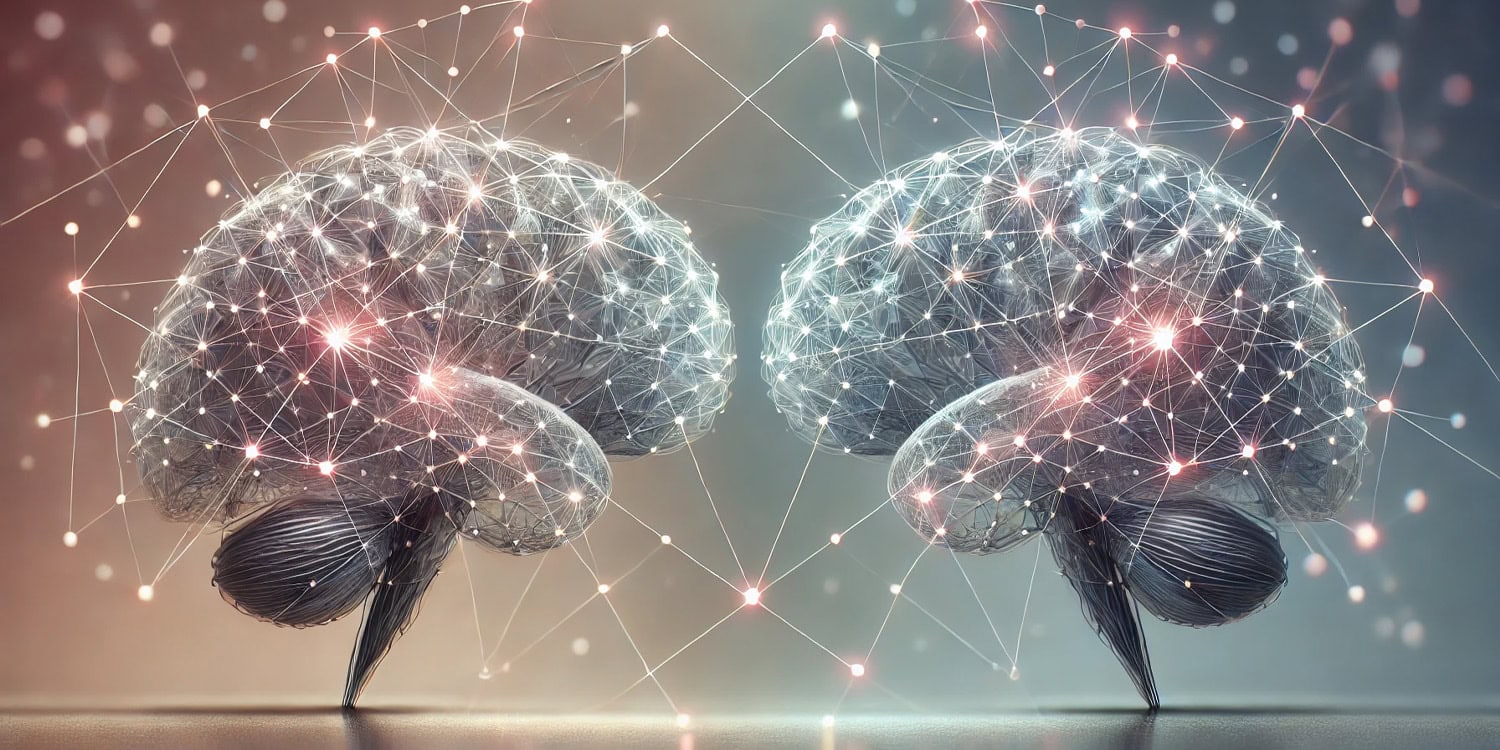Adults with autism spectrum disorder prefer to take on a following role rather than leading when engaged in social imitation tasks, according to new research. This preference was accompanied by notable differences in brain activity between individuals with autism and their neurotypical peers during these interactions. The study’s findings, published in the journal Social Neuroscience, shed light on the unique social dynamics experienced by those with autism and underscore the importance of studying these interactions in realistic, dynamic settings.
Autism is a neurodevelopmental condition that affects how individuals perceive and interact with the world around them. People with autism can have challenges with social communication, such as difficulty understanding social cues, engaging in conversation, or interpreting the emotions of others.
Autism is described as a “spectrum” because it encompasses a wide range of symptoms and abilities; some individuals might require significant support in their daily lives, while others are highly skilled and independent. Despite these challenges, many individuals with autism have strengths in areas such as attention to detail, pattern recognition, and logical thinking.
Traditional research on ASD has often focused on individuals in isolation or in response to artificial stimuli, such as videos or images. While these studies have provided valuable insights, they may not fully capture the complexities of how people with autism interact with others in their daily lives.
The researchers behind the new study wanted to go a step further by exploring how individuals with autism engage in social interactions when they are actually interacting with another person. They were particularly interested in imitation, a fundamental social behavior that plays a key role in learning and bonding. Imitation is not just about copying movements; it’s also about understanding and connecting with the person being imitated.
“My research is focused on the biological basis of social cognition, particularly during interactive exchanges. In this context, I have developed multi-brain recordings (also known as hyperscanning) to demonstrate that social cognition is not just something that happens inside a single brain, but is a distributed process across brains and bodies,” said study author Guillaume Dumas, an associate research professor at the University of Montreal and the director of the Precision Psychiatry and Social Physiology laboratory in the CHU Sainte Justine Research Center.
“We have shown that social interaction not only changes intra-brain activity but also gives rise to inter-brain synchronization. This has significant implications for how we understand human cognition in all its diversity. In the context of autism, it is especially important to adopt an interpersonal perspective that focuses less on individual abilities and more on understanding alterations in social behavior as consequences of interpersonal processes.”
The study involved 40 participants, including 10 high-functioning adults with autism and 30 adults without the condition. These participants were divided into pairs, or dyads, which were either composed of two typical adults (control dyads) or one adult with autism and one typical adult (mixed dyads).
The participants were asked to perform a series of imitation tasks involving hand movements. In these tasks, one participant would lead by performing a hand movement, while the other would follow by imitating the movement. The participants were seated in separate rooms and could see each other’s hand movements on a TV screen, allowing them to engage in the imitation task as if they were face-to-face.
Throughout the experiment, the researchers monitored the participants’ brain activity using EEG hyperscanning. This method captures the electrical activity of the brain from the surface of the scalp, enabling the researchers to analyze how well the participants’ brain waves synchronized during the imitation tasks. The study focused particularly on the low-alpha and high-alpha frequency bands, which are associated with brain activity related to attention and cognitive processing.
Behaviorally, individuals with autism spectrum disorder showed a preference for following rather than leading during the imitation tasks. While this preference might seem minor, it suggests that people with autism might be more comfortable in social interactions where they can take a responsive role rather than initiating the interaction.
“Autism is not necessarily related to less interactive ability but rather a change in the way the interaction unfolds,” Dumas told PsyPost.
On a neural level, the researchers found significant differences in brain synchrony between the control dyads and the mixed dyads. In the control dyads, there was a high degree of synchrony in the low-alpha frequency band during the imitation tasks, indicating strong neural coupling between the two participants. This synchrony was much less pronounced in the mixed dyads, suggesting that the presence of an individual with autism in the pair disrupted the typical pattern of brain synchronization seen in neurotypical individuals.
Interestingly, the mixed dyads showed increased synchrony in the high-alpha frequency band compared to the control dyads. This finding suggests that the individuals with autism and their neurotypical partners might be using different cognitive strategies to navigate the social interaction, potentially requiring more mental effort or visual attention to maintain the connection.
The findings highlight “that autism is not just something inside one person,” Dumas said. “This is a relational condition.”
While this study provides valuable insights, it also has some limitations. The sample size was relatively small, with only 40 participants, and the group of individuals with autism was limited to high-functioning adults. This means that the findings may not fully represent the broader autism spectrum. Another limitation of the study is its reliance on EEG hyperscanning, which, while powerful, has its own set of challenges. For instance, EEG measures brain activity on the surface of the scalp, which can make it difficult to determine the exact brain regions involved in the observed synchrony.
“We are now studying a large cohort to replicate these observations on a larger scale and uncover additional markers at the physiological level, such as heartbeat and skin conductance,” Dumas said. “Our goal is to develop an interpersonalized approach to autism, embracing both the relational dimensions of this condition and the rich diversity of individuals. This could pave the way for a more preventive approach to mental health, through an understanding of individual profiles at biological, psychological, and social levels, while also designing a more inclusive society that facilitates the lives of the many ways of being in the world.”
The study, “Distinct social behavior and inter-brain connectivity in Dyads with autistic individuals,” was authored by Quentin Moreau, Florence Brun, Anaël Ayrolles, Jacqueline Nadel, and Guillaume Dumas.




